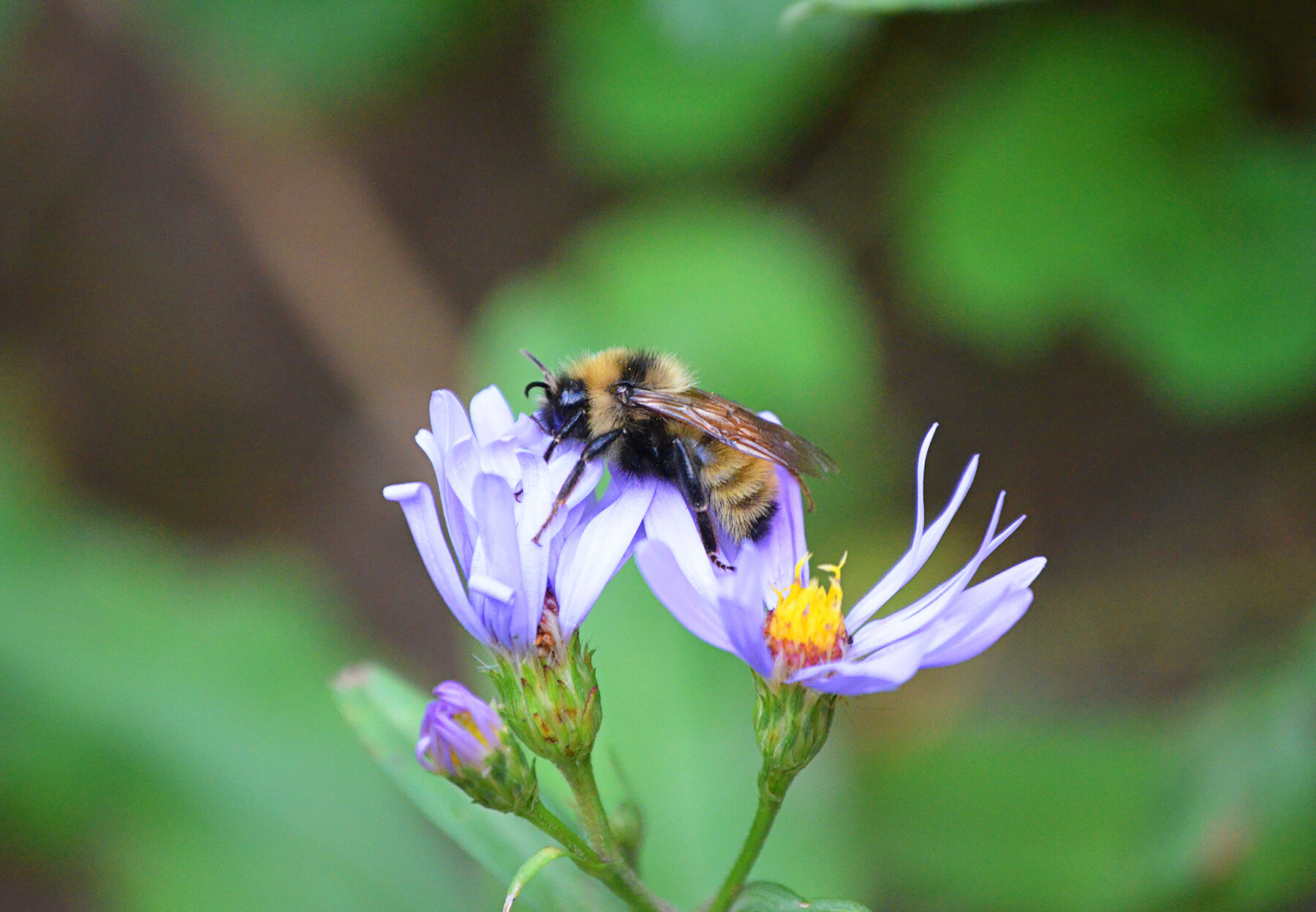
Colletidae
Colletidae (plasterer bees)
Of the 55 species of bees in the Colletidae family found in Canada, 22 of them occur in Alberta.
Colletid bees are often referred to as plasterer or cellophane bees because they apply a lining to their nests to protect their young from soil moisture and fungi. Unlike other bees, they have short, forked tongues which they use to apply a transparent, cellophane-like material to their brood cells. Many are solitary ground nesters, sometimes forming large aggregations. Others nest in cavities such as hollow twigs. Many colletid bees do not have pollen-carrying hairs because they carry pollen in their internal crops.
Colletes (plasterer bee)
Of the 33 species of Colletes bees found in Canada, 12 of them occur in Alberta.
Colletes are medium-sized, hairy bees with angled eyes so their face looks heart-shaped. They are black with well-defined abdominal hair bands.
They are ground-nesting solitary bees which build cells in underground nests that are lined with a cellophane-like secretion from their Dufour’s gland which they apply to the nest wall with their bi-lobed tongue.
Many species are polylectic, but others appear to prefer Asteraceae.
Colletes are hosts to the Epeolus cuckoo bees. The Epeolous female will enter the Colletes nest, pierce holes in the nest cell covering with spines on the end of her abdomen, and lay her egg which will develop into a larva that kills the host young.
Hylaeus (yellow-faced bee)
Of the 24 species of Hylaeus bees found in Canada, 10 of them occur in Alberta.
Hylaeus are very small and small, dark bees, frequently with triangular yellow markings on the face and yellow markings on their legs. They are not as hairy as other bees since they carry pollen inside their crops instead of using external pollen-carrying structures.
Most Hylaeus nest in cavities such as hollow twigs which they pack with a regurgitated mixture of pollen and nectar. They line their nest cells with a cellophane-like material that protects the larva and provisioned food from moisture and fungi.





